Solar Farm in India – Cost, Projects, Subsidy & ROI
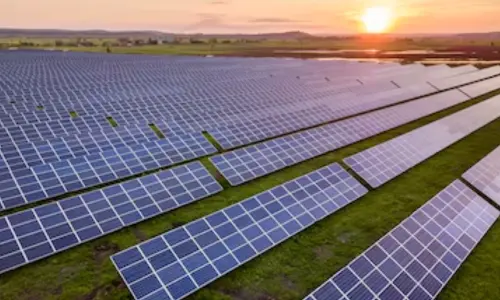
A solar farm, also known as a solar power plant, is a large-scale installation where thousands of solar panels are deployed on land to generate electricity. Unlike rooftop solar systems, solar farms are designed for commercial, industrial, or agricultural power supply and can range from 1 MW to 10+ MW capacity.
In India, solar farming is rapidly growing as a sustainable solution to rising power costs, energy shortages, and climate change. Synergy Solar is a leading solar installer we provide end-to-end solar farm solutions — from land assessment and design to installation, maintenance, and finance guidance — making us one of the trusted solar farm companies in India.
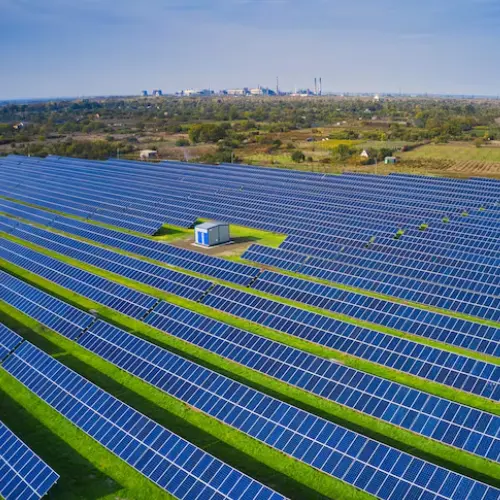
Solar Power Plant in India – Growth & Demand
India is among the world’s fastest-growing solar power markets, driven by rising electricity demand, supportive government policies, and abundant solar resources. With a national target of 500 GW of non-fossil energy capacity by 2030, solar farms will remain the backbone of India’s renewable energy expansion.
Installed Capacity (2024): India has already crossed 70 GW of solar power capacity, positioning itself in the top three global solar markets.
Utility-Scale Share: Around 75% of this capacity comes from large-scale solar farms, while the remaining is from rooftop and distributed systems.
Fact: Rajasthan alone contributes over 20% of India’s solar capacity, thanks to mega-projects like the Bhadla Solar Park, one of the world’s largest solar farms with a capacity of 2,245 MW.
Solar Farm Project & Installation Process
Setting up a solar power plant project involves several key steps:
System Design
PV module selection, elevated mounting structures, inverters, and cabling.
Land Selection
Flat, shadow-free land with high solar irradiation.
Grid Integration
Synchronization with state electricity boards or captive consumption.
Installation
Civil works, solar panel setup, electrical wiring, and safety systems.
Synergy Solar offers turnkey solar farm installation services with complete engineering, procurement, and construction (EPC) support.
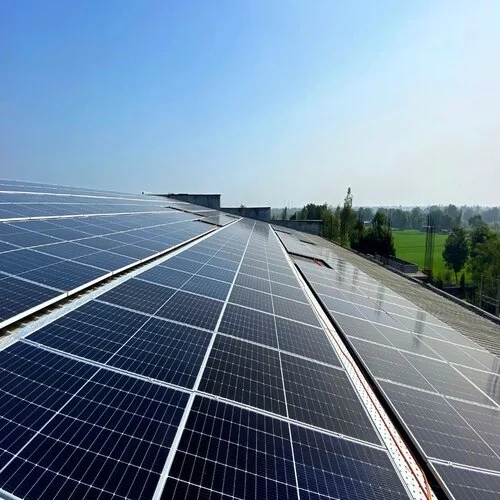
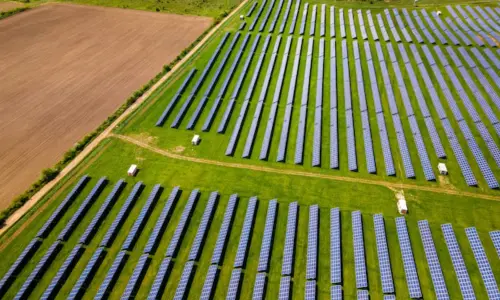
Solar Farm Cost & Setup Price in India
The cost of setting up a solar farm in India depends on land size, system capacity, quality of panels, inverters, mounting structures, and O&M requirements.
Example: A 5 MW solar farm in India can cost around ₹22–24 Crores in 2025, with payback in 5–7 years depending on tariff agreements and land lease expenses.
Used solar panels are a cost-effective choice for solar farm setups, offering lower upfront investment and faster ROI. However, check efficiency, warranty, and condition before purchase to ensure long-term reliability.
Per MW Cost
₹3.5 – 4.5 Crore (including civil works, panels, inverters, BOS, and grid connection).
Per Acre Cost
₹80 Lakh – 1.2 Crore (small-scale setups).
Efficiency Improvement
Installing the automated solar tracker and cleaning system improves the efficiency by 15% to 20% with additional cost of just 10%
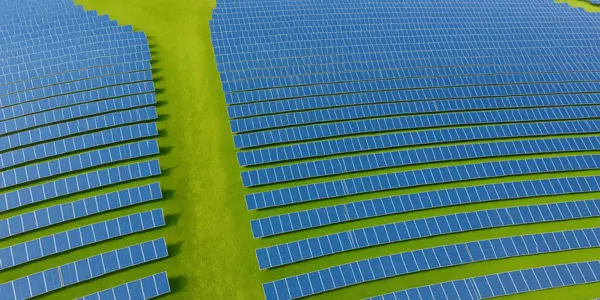
Solar Farm Land Requirements
The land requirement for a solar farm varies depending on the project’s scale, solar panel technology, and design layout. Factors like panel spacing, tilt angle, access roads, and transmission infrastructure also influence total land needs.
1 MW Solar Farm: ~4–5 acres of land.
2 MW Solar Farm: ~8–10 acres.
5 MW Solar Farm: ~20–25 acres.
10 MW Solar Farm: ~40–50 acres.
Note: Using high-efficiency panels (550W and above) can reduce land requirements by 10–15%, while fixed-tilt systems require more space than single-axis trackers.
Solar Farm Project Report
A solar farm project report (DPR – Detailed Project Report) is a critical document for anyone planning to set up a solar power plant in India. It is required for loan approvals, investor presentations, subsidy applications, and regulatory clearances. A well-prepared DPR demonstrates both the technical feasibility and financial viability of the project.
Land survey & solar irradiation data.
Technical system design.
Financial feasibility study.
ROI & payback period calculation.
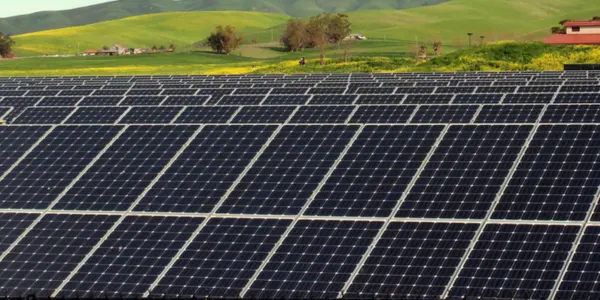
ROI of Solar Farm Projects in India
Solar farms are high-capital investments but deliver long-term, stable profits. With rising electricity demand and supportive government policies, investors and farmers in India are increasingly turning to solar farms as a reliable income source.
Key ROI Metrics
Payback Period: Typically 5–7 years, depending on location, tariff agreements, and land lease costs.
Payback Period: Typically 5–7 years, depending on location, tariff agreements, and land lease costs.
Project Lifespan: 25–30 years of power generation, ensuring consistent long-term revenue.
Income Sources from Solar Farms
Power Sales via PPA – Long-term contracts with utilities, industries, or DISCOMs secure guaranteed revenue.
Renewable Energy Certificates (REC) – Tradable credits for each unit of clean energy generated.
Carbon Credits – A 1 MW solar farm offsets ~1,500 tons of CO₂ annually, creating additional income opportunities.
Captive Use Savings – Industries setting up solar farms for in-house consumption save heavily on electricity bills.
Solar Farm Maintenance
Regular operation and maintenance (O&M) keeps solar farms performing at peak efficiency:

Remote monitoring systems
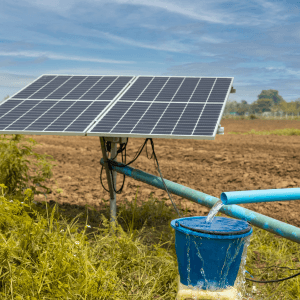
Weed and vegetation control
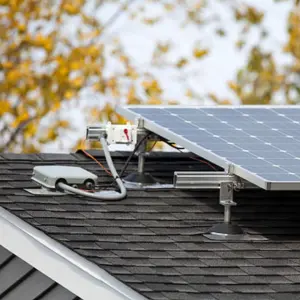
Inverter & cabling inspections
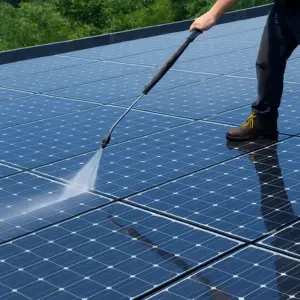
Solar panel cleaning
Synergy Solar provides AMC services for solar farms across India.
Benefits of Solar Power Plants
Solar power plants deliver clean, reliable, and profitable energy for decades, making them one of the best renewable investments in India.
Energy Independence
Farmers and industries can generate their own electricity, reducing grid reliance and shielding against rising tariffs.
Long Lifespan
With a system life of 25–30 years, they provide stable power with minimal maintenance.
Clean & Renewable
Solar farms use sunlight, reducing dependence on fossil fuels and cutting CO₂ emissions. A 1 MW plant offsets nearly 1,500 tons of CO₂ each year.
Rural Growth
Solar projects create jobs in installation, operation, and maintenance, while also opening land-leasing opportunities for farmers.
Extra Income
Investors can earn through carbon credits and Renewable Energy Certificates (RECs) in addition to power sales.
Solar Farm Loan in India
Setting up a solar farm in India requires high upfront investment, but several financing options are available.
- Banks & NBFCs – Offer solar farm loans with repayment terms of 7–10 years.
- Eligibility – Requires a solar farm project report (DPR), land documents, and PPA (Power Purchase Agreement) if applicable.
- Interest Rates – Typically range from 9–12%, depending on the project and lender.
- Farmers & SMEs – Can access special renewable energy financing under government and priority sector lending schemes.
Solar Farm Business Opportunities for Farmers
For Indian farmers, solar farms open new possibilities:
Lease Land: Farmers can lease unused land to solar companies for steady income.
Agrivoltaics Farming: Farmers can grow crops or raise livestock under solar panels, maximizing per-acre profitability.
Own Solar Farm: With loans and cooperative support, farmers can build small-scale solar farms.
Why Choose Synergy Solar for Solar Farms in India?
At Synergy Solar, we provide more than just solar panels — we deliver end-to-end solar farm solutions that maximize efficiency and ROI.
Pan-India Expertise
We design and install solar power plants across all major states in India, customized for local conditions.
High ROI Projects
Our optimized systems reduce setup costs and deliver 12–16% annual ROI with a payback of 5–7 years.
Complete Project Reports
We prepare solar farm project reports (DPRs) with land analysis, technical design, and financial feasibility for investors and farmers.
Turnkey EPC Solutions
From land assessment and engineering to installation and maintenance, we handle the complete process.
Sustainability First
Our projects cut CO₂ emissions and qualify for carbon credits & RECs, boosting long-term profitability.
Trusted Quality
We use Tier-1 solar panels, advanced inverters, and durable structures with a lifespan of 25–30 years.
With Synergy Solar, you get a reliable partner for profitable and sustainable solar farm projects in India.
Frequently Asked Questions (FAQ) – Solar Farms in India
What is a solar farm in India?
A solar farm, also called a solar power plant, is a large-scale installation where multiple solar panels are set up on land to generate electricity for commercial, industrial, or agricultural use.
How much land is required for a 1 MW solar farm?
A 1 MW solar farm requires around 4–5 acres of land, depending on panel efficiency and system design.
What is the cost of setting up a solar farm in India?
The cost of a 1 MW solar power plant in India is typically ₹3.5–4.5 crore, while smaller setups average ₹80 lakh–1.2 crore per acre.
Do farmers get subsidies for solar farms in India?
Currently, there is no direct subsidy for large solar farms, but farmers can benefit under PM-KUSUM scheme for solar pumps and decentralized systems.
How do I get a solar farm loan?
Banks and NBFCs in India provide solar farm loans with repayment terms of 7–10 years. A solar farm project report (DPR) is required for loan approval.
What is the ROI of solar farm projects in India?
Solar farms usually offer 12–16% annual ROI, with a payback period of 5–7 years, depending on tariff rates and land costs.
